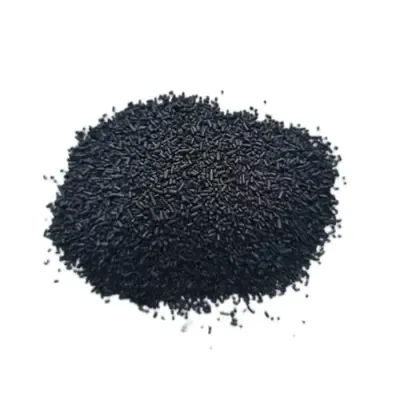
Yes, activated carbon can be made from coal. Coal is a common carbonaceous raw material that can be converted into activated carbon with porous structure and excellent adsorption performance under appropriate conditions. Below we discuss in detail the process of making activated carbon from coal and the key steps involved.

1. Coal conversion process
The preparation of activated carbon starts with selecting the appropriate coal type. Coal can be divided into different grades, including anthracite, bituminous coal and lignite, etc. Among them, anthracite and bituminous coal are usually used to prepare activated carbon because of their relatively high carbon content.
The process of preparing activated carbon is mainly divided into two key steps:
2. Carbonization: This is the process of heating coal in an oxygen-deficient environment to remove non-carbon components. At high temperature, the volatile substances and gases in the coal will be released, leaving behind a carbonaceous substance, the carbonization product. The carbonized material is purer and has a higher carbon content than the original coal.
3. Activation: The carbonization product will further increase its surface area and porosity during the activation process. There are two main methods of activation: physical activation and chemical activation. Physical activation involves the use of gases (such as carbon dioxide, nitrogen) or steam to expand the pore structure of the carbon through high temperature and pressure. Chemical activation involves the use of chemical agents, such as potassium hydroxide or phosphoric acid, to increase the adsorption properties of activated carbon.
4. Application field
By preparing activated carbon from coal, it can be used in many fields:
1). Water treatment: Activated carbon prepared from coal can remove organic matter, pigment, odor, etc. in water treatment, thereby improving water quality.
2). Gas adsorption: Activated carbon prepared from coal can remove harmful gases in gas purification and improve air quality.
3). Industrial applications: Activated carbon can be used in industrial processes such as waste gas treatment, solvent recovery and metal catalysis.
In conclusion, the preparation of activated carbon from coal is a feasible and important process that provides us with a material for efficient removal of pollutants. Through the process of carbonization and activation, coal can be converted into activated carbon with high surface area and adsorption performance, which is widely used in environmental protection, water treatment, air purification and other fields. This process not only increases the added value of coal, but also provides a beneficial resource utilization approach for sustainable development.